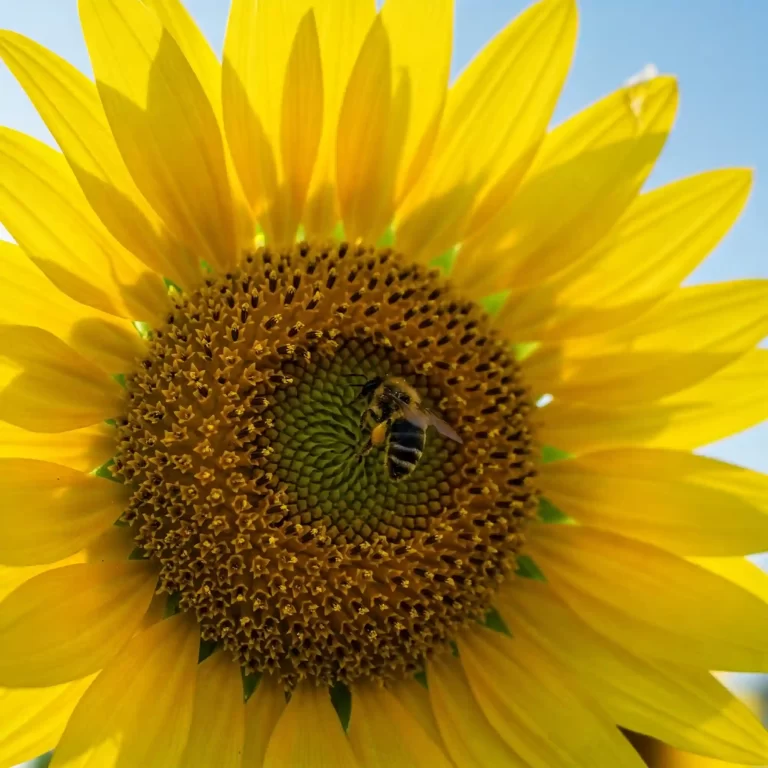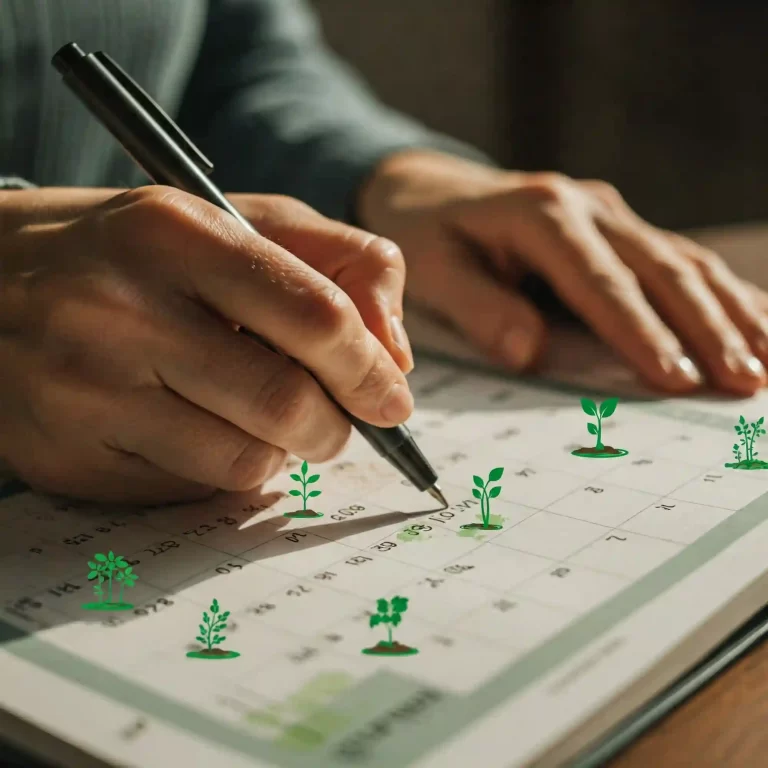| – There are many unusual plants in the world that have amazing adaptations and features. |
| – Some of the most weird and fascinating plants are lithops, venus flytrap, bird of paradise, victoria amazonica, and starfish plant. |
| – Lithops are succulents that look like rocks or pebbles and survive in harsh environments. |
| – Venus flytrap is a carnivorous plant that traps and digests insects with its snap trap leaves. |
| – Bird of paradise is a flowering plant that resembles a bird in flight and attracts pollinators with its bright colors and shapes. |
| – Victoria amazonica is a giant water lily that floats on the water surface with its huge leaves and flowers. |
| – Starfish plant is a succulent that emits a foul odor to attract flies and produces large and hairy flowers that look like starfish. |
Have you ever wondered how diverse and wonderful the plant kingdom is? Do you want to learn about some of the most weird and fascinating plants in the world? If you are curious about the quirky and incredible plants that nature has to offer, then this article is for you.
In this article, we will explore five unusual plants that will blow your mind. These plants have amazing adaptations and features that make them unique and extraordinary. They are:
- Lithops: The living stones that blend in with their surroundings.
- Venus flytrap: The carnivorous plant that traps and digests insects.
- Bird of paradise: The flower that looks like a bird in flight.
- Victoria amazonica: The giant water lily that can hold up to 45 kg.
- Starfish plant: The flower that smells like rotting flesh.
Are you ready to discover more about these amazing plants? Then keep reading and prepare to be amazed.
Lithops: The Living Stones
One of the most unusual plants in the world is lithops, also known as living stones, stone plants, or pebble plants. These are succulents that look like rocks or pebbles and are native to southern Africa. They have evolved to blend in with their surroundings to avoid being eaten by herbivores.
Lithops have two thick leaves that store water and a slit between them where the flowers emerge. The leaves are usually gray, brown, green, or pink, and have patterns and markings that resemble stones. The flowers are usually white, yellow, or orange, and have a sweet scent.
Lithops have a fascinating life cycle that adapts to the seasons. They grow new leaves in the fall and shed the old ones in the spring. They flower in the late summer or early fall and produce seeds that are dispersed by the wind or rain. They go dormant in the summer and winter and need very little water and nutrients.
There are over 40 species and hundreds of varieties of lithops, and they differ in color, shape, and size. Some of the common names of lithops are:
- Lithops aucampiae: Karasburg living stone, brown stone plant, or window plant.
- Lithops dorotheae: Dorothea’s living stone, zebra stone, or red top.
- Lithops fulviceps: Ochre living stone, lion’s eye, or tiger jaws.
- Lithops hookeri: Hooker’s living stone, mosaic stone, or finger stone.
- Lithops lesliei: Leslie’s living stone, living pebbles, or pebble plant.
Some of the interesting facts and trivia about lithops are:
- Lithops are popular among collectors and hobbyists, and are often grown in pots or containers as houseplants or ornaments.
- Lithops are easy to grow and care for, as long as they are given enough light, well-drained soil, and minimal water.
- Lithops are sometimes used as food or medicine by the indigenous people of southern Africa, who call them “cattle’s hoof”, “sheep’s hoof”, or “horse’s hoof”.
- Lithops are named after the Greek word “lithos”, which means “stone”, and “ops”, which means “face” or “eye”.
Venus Flytrap: The Carnivorous Plant
Another unusual plant in the world is venus flytrap, also known as Dionaea muscipula, or simply Dionaea. This is a carnivorous plant that traps and digests insects and other small animals. It is native to the subtropical wetlands of North and South Carolina in the United States.
Venus flytrap has modified leaves that form a snap trap with sensitive hairs that trigger the closure when touched by prey. The trap has interlocking teeth that seal the prey inside and secrete digestive enzymes that break down the insect and absorb its nutrients. The trap then reopens and releases the remains of the prey.
Venus flytrap has a complex mechanism that prevents it from wasting energy and resources on non-prey stimuli. It requires two touches within 20 seconds to close the trap, and five more touches within 20 minutes to start the digestion. It also has a memory that allows it to remember the size and number of prey items.
There are several cultivars and varieties of venus flytrap, and they differ in color, shape, and size. Some of the common names of venus flytrap are:
- Dionaea muscipula ‘Akai Ryu’: Red dragon, red piranha, or red venus flytrap.
- Dionaea muscipula ‘B52’: B52 bomber, giant venus flytrap, or super-sized venus flytrap.
- Dionaea muscipula ‘Dente’: Dente, shark teeth, or serrated venus flytrap.
- Dionaea muscipula ‘King Henry’: King Henry, royal venus flytrap, or king of venus flytraps.
- Dionaea muscipula ‘Wacky Traps’: Wacky traps, funky venus flytrap, or weird venus flytrap.
Some of the interesting facts and trivia about venus flytrap are:
- Venus flytrap is one of the most famous and popular carnivorous plants in the world, and is often featured in movies, books, games, and comics.
- Venus flytrap is endangered in the wild due to habitat loss, poaching, and over-collection, and is protected by law in some states and countries.
- Venus flytrap can be grown and cultivated as a houseplant or a garden plant, as long as it is given enough light, moist soil, and distilled water.
- Venus flytrap can eat not only insects, but also spiders, worms, slugs, snails, and even small frogs, lizards, and mice.
Bird of Paradise: The Flower that Looks Like a Bird
One more unusual plant in the world is bird of paradise, also known as Strelitzia, crane flower, or crane lily. This is a flowering plant that resembles a bird in flight and attracts pollinators such as sunbirds and hummingbirds. It is native to South Africa and has been widely cultivated around the world.
Bird of paradise has bright orange and blue petals that form a beak-like structure and a crest-like structure that mimic the head and plumage of a bird. The flowers are held on long stems above the foliage and can last for several weeks. The leaves are large, green, and banana-like, and can grow up to 2 meters in length.
Bird of paradise has a unique pollination strategy that involves a complex interaction between the flower and the bird. The flower has a nectar-filled cup that the bird dips its beak into, and a trigger that releases the pollen onto the bird’s feet or chest. The bird then transfers the pollen to another flower of the same species.
There are five species and several hybrids of bird of paradise, and they differ in color, shape, and size. Some of the common names of bird of paradise are:
- Strelitzia reginae: Common bird of paradise, orange bird of paradise, or queen bird of paradise.
- Strelitzia nicolai: Giant bird of paradise, white bird of paradise, or Natal wild banana.
- Strelitzia alba: White bird of paradise, Cape wild banana, or white-flowered bird of paradise.
- Strelitzia juncea: Narrow-leaved bird of paradise, rush-leaved bird of paradise, or reed bird of paradise.
- Strelitzia caudata: Mountain bird of paradise, white bird of paradise, or wild banana.
Some of the interesting facts and trivia about bird of paradise are:
- Bird of paradise is the official flower of Los Angeles, California, and the floral emblem of Madeira, Portugal.
- Bird of paradise is widely used as a cut flower, a potted plant, or a landscape plant, and is valued for its exotic and colorful appearance.
- Bird of paradise is named after the German-born British queen Charlotte of Mecklenburg-Strelitz, who was an avid botanist and patron of the arts and sciences.
- Bird of paradise is related to the banana, the ginger, and the heliconia, and belongs to the same plant family, Zingiberaceae.
Victoria Amazonica: The Giant Water Lily
Another unusual plant in the world is victoria amazonica, also known as giant water lily, royal water lily, or Amazon water lily. This is a water plant that can grow up to 3 meters in diameter and has huge circular leaves that float on the water surface. It is native to the Amazon basin and has huge circular leaves that float on the water surface. The leaves have a thick ribbed structure that supports their weight and can hold up to 45 kg. The flowers are white on the first night and pink on the second night, and emit a pineapple-like fragrance.
Victoria amazonica has a remarkable life cycle that adapts to the changes in the water level and temperature. It grows from seeds that germinate underwater and produce long stems that reach the surface. The leaves then expand and cover the water surface, creating a microclimate that protects the plant from frost and predators. The flowers then bloom at night and attract beetles as pollinators with their heat and scent. The flowers then close and trap the beetles inside, and change their color and sex. The next night, the flowers reopen and release the beetles, which carry the pollen to another flower of the same species.
There are two species and several hybrids of victoria amazonica, and they differ in color, shape, and size. Some of the common names of victoria amazonica are:
- Victoria cruziana: Santa Cruz water lily, Cruz’s water lily, or Argentine water lily.
- Victoria ‘Longwood Hybrid’: Longwood water lily, Longwood hybrid, or Longwood victoria.
- Victoria ‘Adventure’: Adventure water lily, Adventure hybrid, or Adventure victoria.
- Victoria ‘Challenger’: Challenger water lily, Challenger hybrid, or Challenger victoria.
- Victoria ‘Atlantis’: Atlantis water lily, Atlantis hybrid, or Atlantis victoria.
Some of the interesting facts and trivia about victoria amazonica are:
- Victoria amazonica is the largest water lily in the world, and can grow up to 8 meters in diameter in the wild.
- Victoria amazonica is named after Queen Victoria of the United Kingdom, who was fascinated by the plant and sponsored its cultivation and study.
- Victoria amazonica is cultivated in many botanical gardens and ponds around the world, and is admired for its beauty and size.
- Victoria amazonica is related to the lotus, the water chestnut, and the banana, and belongs to the same plant family, Nymphaeaceae.
Starfish Plant: The Flower that Smells Like Rotting Flesh
The last unusual plant in the world is starfish plant, also known as Stapelia, carrion flower, or corpse flower. This is a succulent that emits a foul odor to attract flies as pollinators and produces large and hairy flowers that resemble starfish. It is native to southern Africa and has been widely cultivated as an ornamental plant.
Starfish plant has fleshy stems that are green, gray, or purple, and have four or five angles. The stems store water and nutrients and can grow up to 20 cm in height. The flowers are star-shaped and have red or yellow stripes. The flowers can grow up to 30 cm in diameter and have a hairy texture that mimics the fur of a dead animal.
Starfish plant has a clever pollination strategy that involves a deceptive interaction between the flower and the fly. The flower has a nectar-filled cup that the fly lands on, and a scent that resembles rotting flesh. The fly then crawls into the flower, looking for a suitable place to lay its eggs. The flower then traps the fly inside, and transfers the pollen to its body. The flower then releases the fly, which carries the pollen to another flower of the same species.
There are over 100 species and several hybrids of starfish plant, and they differ in color, shape, and size. Some of the common names of starfish plant are:
- Stapelia gigantea: Giant starfish plant, giant carrion flower, or giant corpse flower.
- Stapelia hirsuta: Hairy starfish plant, hairy carrion flower, or hairy corpse flower.
- Stapelia flavopurpurea: Yellow and purple starfish plant, yellow and purple carrion flower, or yellow and purple corpse flower.
- Stapelia leendertziae: Black starfish plant, black carrion flower, or black corpse flower.
- Stapelia schinzii: Spotted starfish plant, spotted carrion flower, or spotted corpse flower.
Some of the interesting facts and trivia about starfish plant are:
- Starfish plant is toxic to humans and animals, and can cause skin irritation, nausea, vomiting, and diarrhea if ingested or touched.
- Starfish plant is rare in the wild due to habitat loss, over-collection, and competition from invasive plants, and is protected by law in some countries.
- Starfish plant can be grown and cultivated as a houseplant or a garden plant, as long as it is given enough light, well-drained soil, and moderate water.
- Starfish plant is used as a traditional medicine in some regions of Africa, where it is believed to treat wounds, infections, snake bites, and stomach problems.
Conclusion
We have explored five unusual plants that will blow your mind. These plants are:
- Lithops: The living stones that blend in with their surroundings.
- Venus flytrap: The carnivorous plant that traps and digests insects.
- Bird of paradise: The flower that looks like a bird in flight.
- Victoria amazonica: The giant water lily that can hold up to 45 kg.
- Starfish plant: The flower that smells like rotting flesh.
These plants have amazing adaptations and features that make them unique and extraordinary. They are examples of the diversity and wonder of the plant kingdom, and the creativity and beauty of nature.
Do you have any thoughts, comments, or questions about these amazing plants? Do you want to learn more about gardening and nature? Then feel free to share your feedback with us, or visit our website for more topics and tips. Thank you for reading and happy gardening!



